Login
Subscribepain
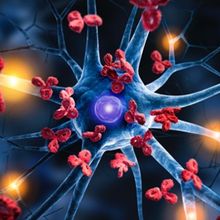
Meningitis Bacteria Trigger Headaches, Then Sneak Into the Brain
Natalia Mesa, PhD | Mar 6, 2023 | 3 min read
Researchers find that bacteria stimulate a headache-causing pain pathway to suppress the immune system and infect the brain.

Study Traces a Neural Circuit Behind Green Light–Mediated Pain Relief
Alejandra Manjarrez, PhD | Dec 9, 2022 | 4 min read
A mouse study concludes color-detecting cones in the eye and a subset of neurons in the brain’s thalamus are why green light exposure has an analgesic effect.
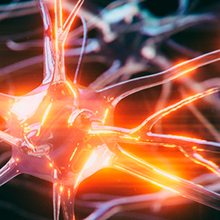
Mapping Neuronal Gene Expression to Understand Pain
The Scientist Creative Services Team in collaboration with Advanced Cell Diagnostics | 1 min read
Ted Price, Diana Tavares-Ferreira, and Stephanie Shiers discuss how mapping gene expression at the neuronal level provides insight into pain mechanisms and anti-pain drug development.
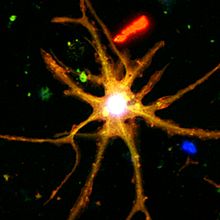
Immune Cells Imitating Neurons Cause Pain in Mice with Tumors
Shafaq Zia | Oct 18, 2022 | 3 min read
Whether the finding of a novel mechanism for cancer-related pain can lead to better treatments for neuropathic pain in people remains to be seen.

Bull Ant Venom Evolved to Make Bites More Painful to Mammals
Dan Robitzski | Jul 5, 2022 | 2 min read
A peptide found in bull ant venom closely resembles a hormone of its primary predator, triggering hypersensitivity and making subsequent bites even more painful than the ones that came before.

The MSC: Regeneration Orchestrator
The Scientist Staff | 7 min read
Scientists uncover the promise of mesenchymal stem cells (MSCs), also known as medicinal signaling cells, to modulate the immune system and regenerate tissue.
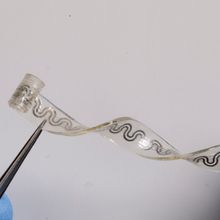
Tiny Nerve-Cooling Implant Relieves Pain in Rats
Shafaq Zia | Jul 1, 2022 | 3 min read
The device can chill nerves as small as a few millimeters across, but more testing and modifications are necessary before it could relieve pain in humans.

Mouse Immune Cells Destroy Nerves’ Coating, Causing Chronic Pain
Patience Asanga | Jun 9, 2022 | 3 min read
A study suggests a way in which acute nerve injury could trigger an autoimmune response that leads to continuing pain in mice.

Do Invertebrates Have Emotions?
Natalia Mesa, PhD | May 26, 2022 | 10+ min read
And how do scientists go about answering that question?

Giannina Descalzi Studies the Factors Underlying Chronic Pain
Natalia Mesa, PhD | May 16, 2022 | 3 min read
The University of Guelph neuroscientist is scoping out the brain regions and genes that change as a consequence of pain that lasts for months or even years.

Early Inflammation Protects Against Chronic Pain, Study Finds
Alejandra Manjarrez, PhD | May 12, 2022 | 3 min read
Human data and experiments in mice challenge the common use of anti-inflammatory drugs to treat pain.

Neurons Firing Together Generate Spontaneous Pain
Abby Olena, PhD | Nov 10, 2021 | 4 min read
Abnormal sympathetic neuron growth leads to simultaneous activation of clusters of sensory neurons, causing the difficult-to-treat sensation.

Mechanisms of Chili’s Heat, Menthol’s Cool Garner Nobel
Chloe Tenn | Oct 4, 2021 | 4 min read
David Julius and Ardem Patapoutian won this year’s Nobel Prize in Physiology or Medicine for their research on the ion channels involved in perceiving heat, cold, pain, and touch.

Morphine Tolerance Pathway Identified in Mice
David Adam | Sep 20, 2021 | 3 min read
Prolonged exposure to morphine triggers cells in the spine to release signaling molecules that increase pain sensitivity and dull the relief of the drug. Blocking this activity could improve pain management.
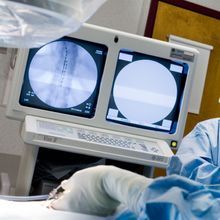
Low Frequency Electric Stimulation Can Treat Back Pain: Study
Emma Yasinski | Sep 2, 2021 | 3 min read
Patients in a small trial said their chronic pain improved an average of 90 percent over the course of 15 days, but returned shortly after the electrical stimulation sessions ended.
Neuron-Released Protein Can Set Off Inflammation: Study
Marcus A. Banks | Aug 19, 2021 | 3 min read
Research in mice suggests that moderating nerve activity with drugs or electrical pulses could modify tissue immune responses, curtailing the chronic pain often associated with inflammatory conditions.

Pain Researcher Quits Academia, Takes Lab Home with Him
Jef Akst | May 1, 2021 | 6 min read
After resigning from the University of New England last year, Geoffrey Bove continues to study the effects of massage on rats in a facility he set up in his house.

Mice Share Each Other’s Pain and Fear
Amanda Heidt | Jan 14, 2021 | 5 min read
The animals adopt the emotional state of their cagemates, and the parts of the brain engaged during the process are different for pain and fear, according to a new study.

Losing Touch: Another Drawback of the COVID-19 Pandemic
Ashley Yeager | May 19, 2020 | 6 min read
Affectionate touches tap into the nervous system’s rest and digest mode, reducing the release of stress hormones, bolstering the immune system, and stimulating brainwaves linked with relaxation.
